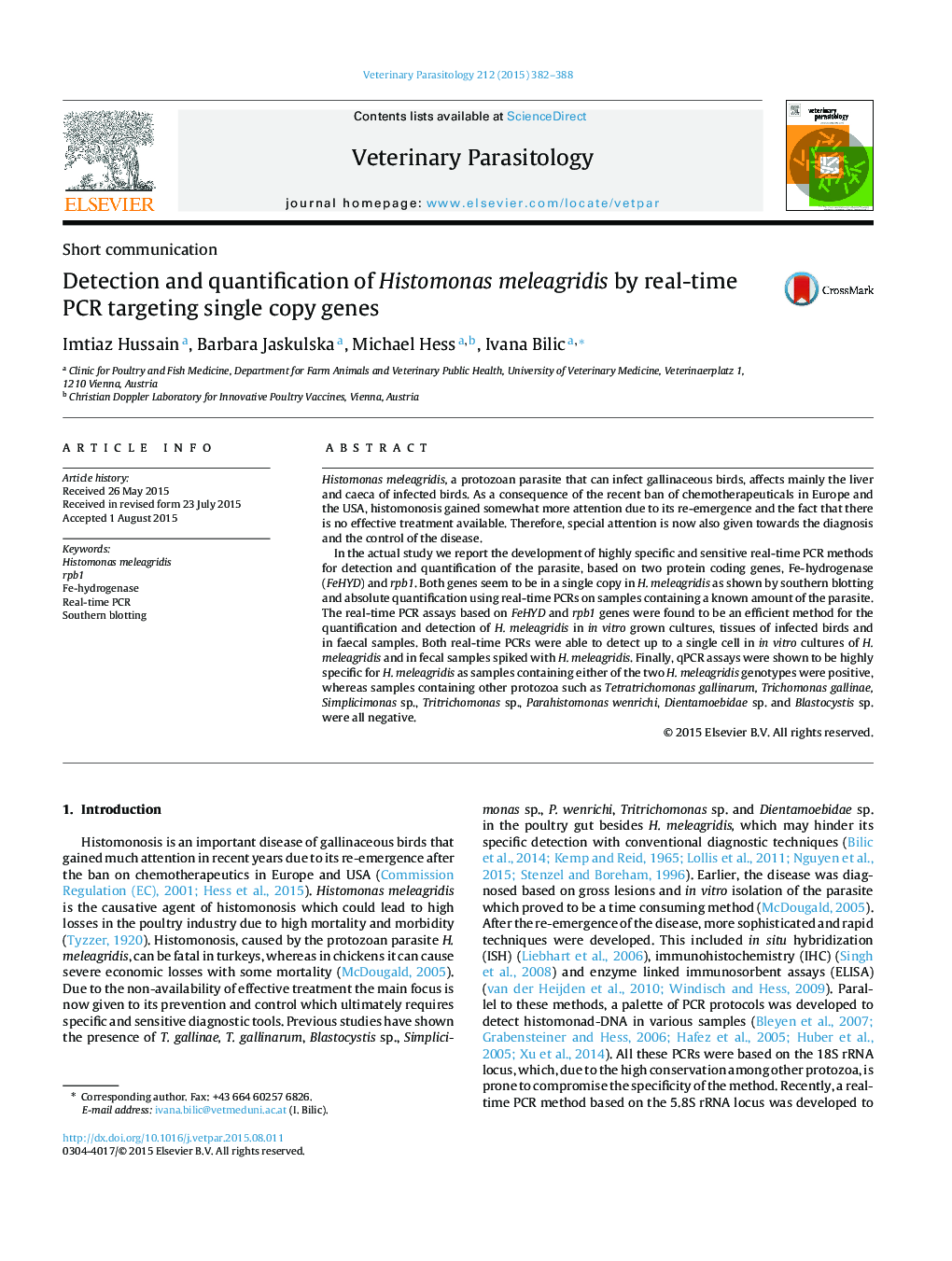| Article ID | Journal | Published Year | Pages | File Type |
|---|---|---|---|---|
| 5802378 | Veterinary Parasitology | 2015 | 7 Pages |
â¢Two real-time PCR assays for detection and quantification of H. meleagridis were developed.â¢The assays are based on protein coding genes FeHYD and rpb1, which seem to be single copy in the H. meleagridis genome, as shown by Southern blotting and absolute quantification using real-time PCRs.â¢Both assays are highly specific, as only samples containing either of two H. meleagridis genotypes were positive, whereas samples containing other protozoa such as Tetratrichomonas gallinarum, Trichomonas gallinae, Simplicimonas sp., Tritrichomonas sp., Parahistomonas wenrichi, Dientamoebide sp. and Blastocystis sp.were all negative.â¢The sensitivity of both assays was 1 histomonad/ reaction.â¢Both assays were successfully used for quantification of H. meleagridis in different sample types.
Histomonas meleagridis, a protozoan parasite that can infect gallinaceous birds, affects mainly the liver and caeca of infected birds. As a consequence of the recent ban of chemotherapeuticals in Europe and the USA, histomonosis gained somewhat more attention due to its re-emergence and the fact that there is no effective treatment available. Therefore, special attention is now also given towards the diagnosis and the control of the disease.In the actual study we report the development of highly specific and sensitive real-time PCR methods for detection and quantification of the parasite, based on two protein coding genes, Fe-hydrogenase (FeHYD) and rpb1. Both genes seem to be in a single copy in H. meleagridis as shown by southern blotting and absolute quantification using real-time PCRs on samples containing a known amount of the parasite. The real-time PCR assays based on FeHYD and rpb1 genes were found to be an efficient method for the quantification and detection of H. meleagridis in in vitro grown cultures, tissues of infected birds and in faecal samples. Both real-time PCRs were able to detect up to a single cell in in vitro cultures of H. meleagridis and in fecal samples spiked with H. meleagridis. Finally, qPCR assays were shown to be highly specific for H. meleagridis as samples containing either of the two H. meleagridis genotypes were positive, whereas samples containing other protozoa such as Tetratrichomonas gallinarum, Trichomonas gallinae, Simplicimonas sp., Tritrichomonas sp., Parahistomonas wenrichi, Dientamoebidae sp. and Blastocystis sp. were all negative.
